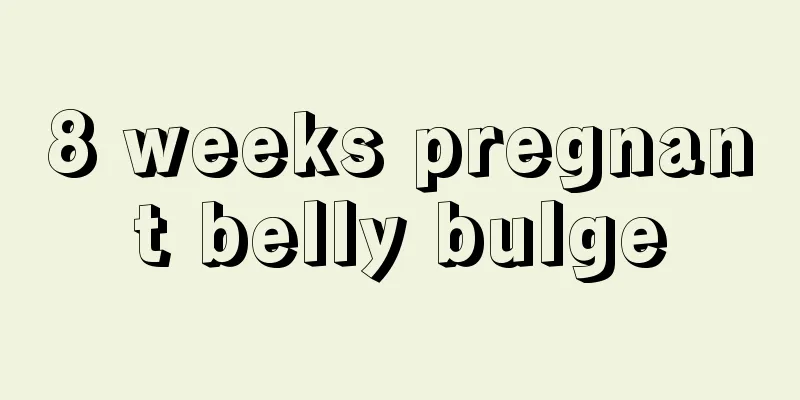How long does it take for menstruation to be clean after caesarean section

|
Many women will have bloody lochia for a period of time after a caesarean section, which is a very normal situation. However, depending on the woman's physical condition, some women will experience lochia for a longer time after delivery, while some women will show greater adverse reactions. Some women also experience severe bleeding after caesarean section. So how long does it take for a woman's menstruation to stop after a caesarean section? 1. After a caesarean section, menstruation usually lasts for 4-6 weeks and the bleeding after delivery is called lochia. The first postpartum discharge is bloody lochia, which usually lasts for 3-5 days and is mainly composed of residual blood and uterine decidua in the uterine cavity. In the past, bloody lochia was serous lochia, which usually lasts about 2 weeks and is mainly composed of inflammatory cells, exfoliated endometrium, and cervical mucus. White lochia, white lochia usually lasts about 2 weeks. The total amount of lochia is generally 400-600ml, and it usually lasts about 4-6 weeks after delivery. For most pregnant women who have caesarean sections, the bloody menstruation lasts for about a week and then stops, and then there is light pink and slightly yellow serous lochia, which lasts for a total of 4-6 weeks. 2. Caesarean section is usually done 20-30 days after the menstruation is over, but in some cases it may take one and a half months. Those who have undergone cesarean section are prone to lochia being difficult to discharge, but if they adopt a semi-recumbent position and turn over more often, it will help the lochia to be discharged, avoiding the lochia accumulating in the uterine cavity and causing infection that affects the repositioning of the uterus, and it will also facilitate the healing of the uterine incision. Pay attention to urination after delivery. As soon as you feel the urge to urinate, you should try to urinate on your own to reduce the risk of urinary tract bacterial infection caused by keeping the catheter in place for too long. 3. Note that those who have undergone cesarean section are prone to difficulty in expelling lochia. However, if they adopt a semi-recumbent position and turn over more often, it will help the lochia to be discharged, avoiding the lochia from accumulating in the uterine cavity and causing infection that affects the repositioning of the uterus. It will also help the healing of the uterine incision. Pay attention to urination after delivery. As soon as you feel the urge to urinate, you should try to urinate on your own to reduce the risk of urinary tract bacterial infection caused by keeping the catheter in place for too long. |
<<: What are the common gynecological diseases?
>>: Woman wakes up feeling exhausted in the morning
Recommend
Why does fish break when it is fried? How can I prevent it from breaking when I fry it?
We all know that there are many ways to eat fish,...
Can I have sex if my period is not over?
For women, one thing they must remember is that t...
How to calculate the date of your period
How to calculate the menstrual cycle? I believe t...
How effective is Sophora flavescens suppository?
Vaginitis is one of the most common female gyneco...
Will staying up late every day delay menstruation?
Many women have irregular menstruation. Some have...
When will the Changgan High-speed Railway be opened? How much does a ticket for the Changgan High-speed Railway cost?
The Changgan High-speed Railway is about to open ...
How long does it take for a bar to show up after medical abortion?
Medical abortion is a relatively common method of...
Lower abdomen bloating and feeling the urge to urinate
The symptoms of lower abdominal distension and co...
How long does it take for the stomach to hurt after spotting?
Before giving birth, there will be many condition...
Seven major culprits of urinary tract infections in women
Why are women more prone to urinary tract infecti...
Can eating avocados reduce belly fat in women? US study
One out of every three Chinese people has a "...
Causes of acne on the chin during ovulation
Some women get acne on their faces after eating s...
How can women delay aging after 40?
What a woman can never accept is that she is gett...
What's going on down there?
Women's vaginal health is very important. In ...
How to prevent moisture from solid wood furniture? How to identify solid wood furniture
In recent years, many luxury houses like to decor...









